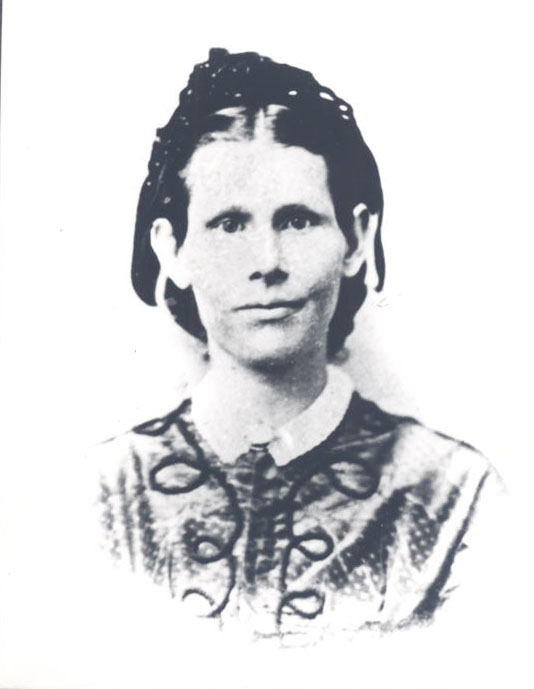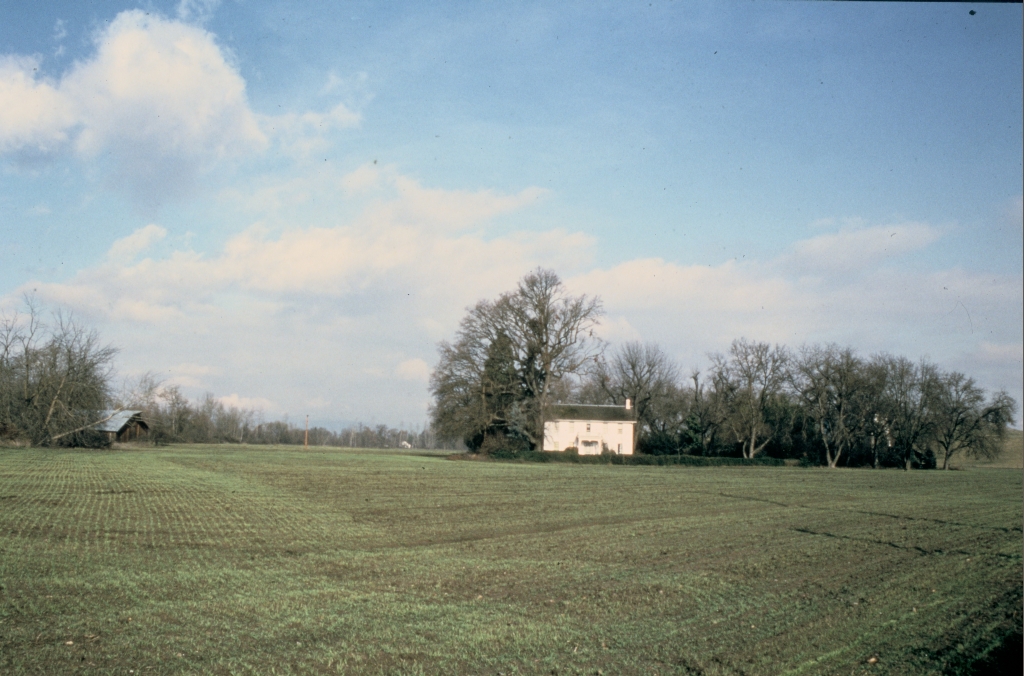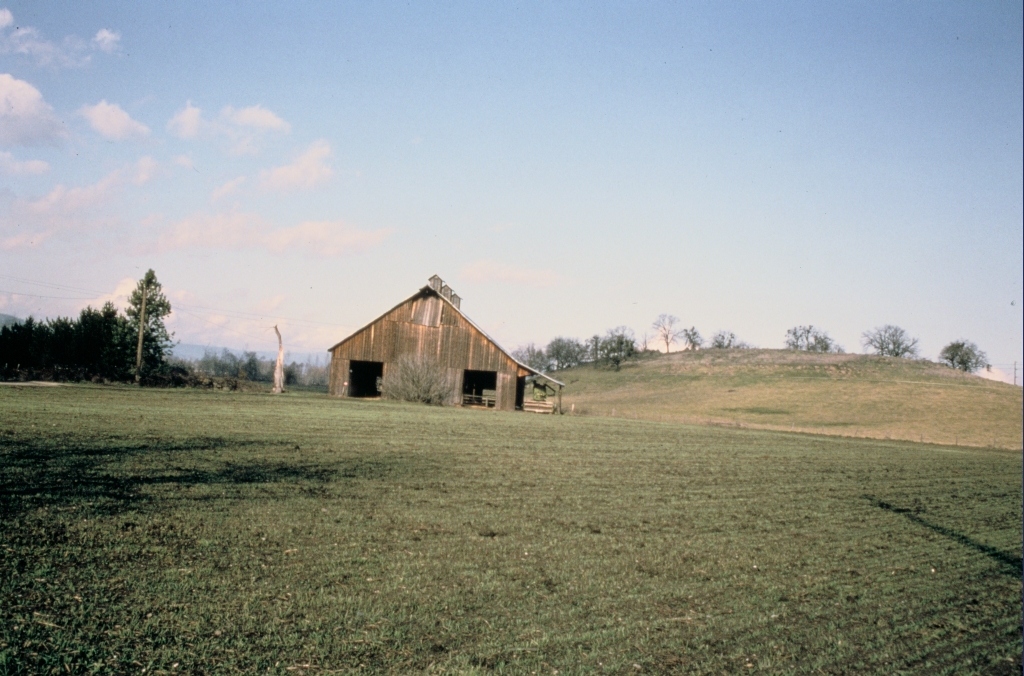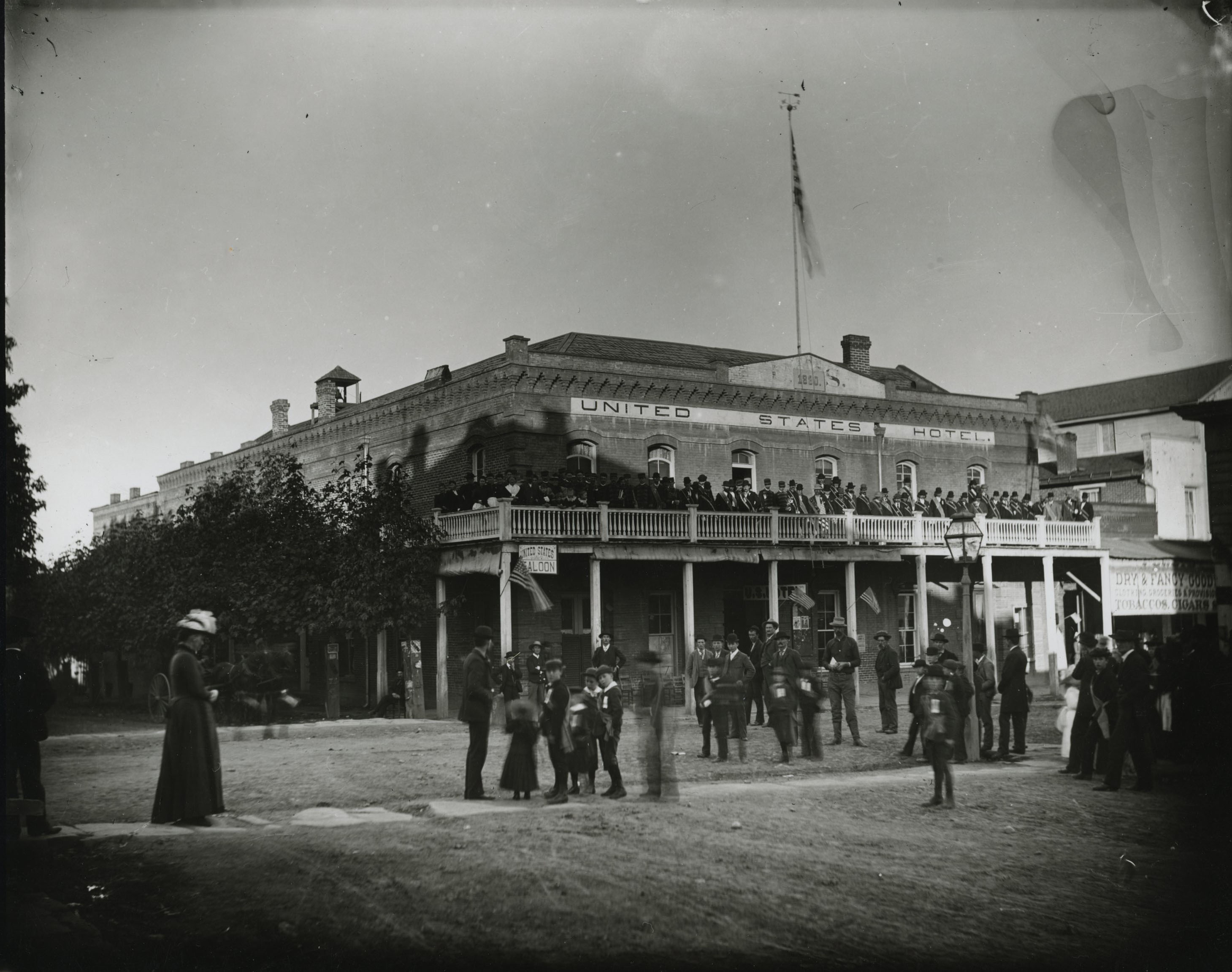The Hanley Farm, situated along Jackson Creek about two miles northeast of Jacksonville, is a historic farmstead owned by the Southern Oregon Historical Society. Placed on the National Register of Historic Places in 1983, the Hanley Farm has a main residence, two large barns, a stone springhouse, and a number of outbuildings. For nearly a century, the farm was operated entirely by Hanley women, notably Alice Hanley and her nieces Claire, Martha, and Mary. All of them played prominent roles in Jackson County horticulture and in the preservation of southern Oregon history, particularly in the establishment and operation of the Southern Oregon Historical Society.
In 1852, Archibald and Elizabeth Welton, together with Elizabeth’s father David Clinton and his wife Jane, established the first farm on the site. The Weltons and Clintons filed adjacent Donation Land Claims, totaling 636 acres, and built a double-family log cabin and a barn (ca. 1854), which still stands. In 1857, they sold the properties to Michael and Martha Hanley.
Ohio-raised Michael Hanley (1824-1889) had joined the rush to gold in California in the 1850s. He soon diverged into livestock dealing, a trade that took him through southern Oregon, where he met Martha Burnett (1832-1887). Hanley took up a Donation Land Claim in Douglas County near Burnett’s family, and the two were married in 1854.
The Hanleys’ first child was born in 1855, and they had eight more children by 1871; six lived to adulthood. After the move to Jackson County in 1857, Michael continued to purchase land, where he raised horses, mules, cattle, sheep, and alfalfa. His property holdings eventually included more than 2,000 acres in Jackson County as well as a large ranch in Klamath County. The farm took the name The Willows from a weeping willow planted in the 1860s.
In 1875, a handsome addition was made to the 1860s house. Constructed of sugar pine, its interior is graced by a central hall and two parlors, ten-foot ceilings, and plastered walls; there are fireplaces in the parlors, the main bedroom, and the dining room. The namesake willow toppled in 1940 and again in 1986, but in each instance it regenerated from shoots. It was designated an Oregon heritage tree in 2008.
When Martha Hanley died of tuberculosis in 1887, Michael was in poor health. He became an invalid, cared for by his eldest surviving daughter Alice (1859-1940), and died in 1889. Alice, who had shown an active interest in farming, inherited The Willows and continued to improve the property.
A second large barn was built in 1900, a shop was built, and the windmill and water tower were replaced in 1933. Alice Hanley’s agricultural interests led her to promote the establishment in 1919 of the state Home Extension Service (now the Oregon State University Extension Service), on whose board she served for two decades. She was an avid gardener and a charter member of the Oregon Federation of Garden Clubs. She also ran unsuccessfully against a pro-Ku Klux Klan candidate for the state legislature in 1922.
After Alice’s death in 1940, her three nieces—Claire, Martha, and Mary Hanley—inherited The Willows. The women, the daughters of Alice’s brother John and his wife Mary, had been orphaned in 1904. Alice had raised Claire Hanley (1898-1963), who adopted many of Alice’s interests in the extension service and horticulture. She was one of the founders of the Southern Oregon Historical Society and was its president from 1949 until her death. The sisters sold eighty acres to Jackson County for the experiment station; the arboretum there was named for Claire after her death.
Martha Hanley (1887-1975) grew up with relatives in Chile and eastern Oregon, returning to the Rogue Valley in 1935. Mary Hanley (1893-1986) grew up on her uncle Michael Hanley's Little Butte Creek Ranch. After Alice’s death, Mary lived at the farm, where she raised orchids. She was curator of the Jacksonville Museum, operated by the Southern Oregon Historical Society, from 1955 until 1969. As the last of the Hanley family at The Willows, it was Mary who donated the property to the historical society in 1982 as an outdoor farm museum.
The Hanley Farm today comprises thirty-seven acres, most of it in active agricultural use. The farm’s gardens supply a CSA (community supported agriculture) operation, a roadside farm stand, and the Jacksonville Farmers Market. The historical society offers a variety of agriculture-related educational programs throughout the year. The Hanley Farm is a rare example of a historical agricultural landscape in Oregon and a testament to the significance of the Hanley women as farmers, gardeners, and historic preservationists.
-
![Hanley Farm]()
Hanley Farm.
Hanley Farm Courtesy Oregon State Historic Preservation Office, University of Oregon Libraries
-
![Martha Burnett Hanley, c. 1865]()
Martha Burnett Hanley, c. 1865.
Martha Burnett Hanley, c. 1865 Courtesy Oreg. Hist. Soc. Research Lib., neg. no.010835
-
![Hanley Farm]()
Hanley Farm.
Hanley Farm Courtesy Oregon State Historic Preservation Office, University of Oregon Libraries
-
![Interior]()
Interior.
Interior Courtesy Oregon State Historic Preservation Office, University of Oregon Libraries
-
![Hanley Farm]()
Hanley Farm.
Hanley Farm Courtesy Oregon State Historic Preservation Office, University of Oregon Libraries
-
![Hanley Farm]()
Hanley Farm.
Hanley Farm Courtesy Oregon State Historic Preservation Office, University of Oregon Libraries
Related Entries
Map This on the Oregon History WayFinder
The Oregon History Wayfinder is an interactive map that identifies significant places, people, and events in Oregon history.
Further Reading
Staehli, Alfred. The Michael Hanley farmstead, Jacksonville, Oregon: historic structure report. Medford: Southern Oregon Historical Society, 1994.
Walling, Albert G. History of Southern Oregon, comprising Jackson, Josephine, Douglas, Curry, and Coos counties: compiled from the most authentic sources. Portland, Ore.: A.G. Walling, 1884.







